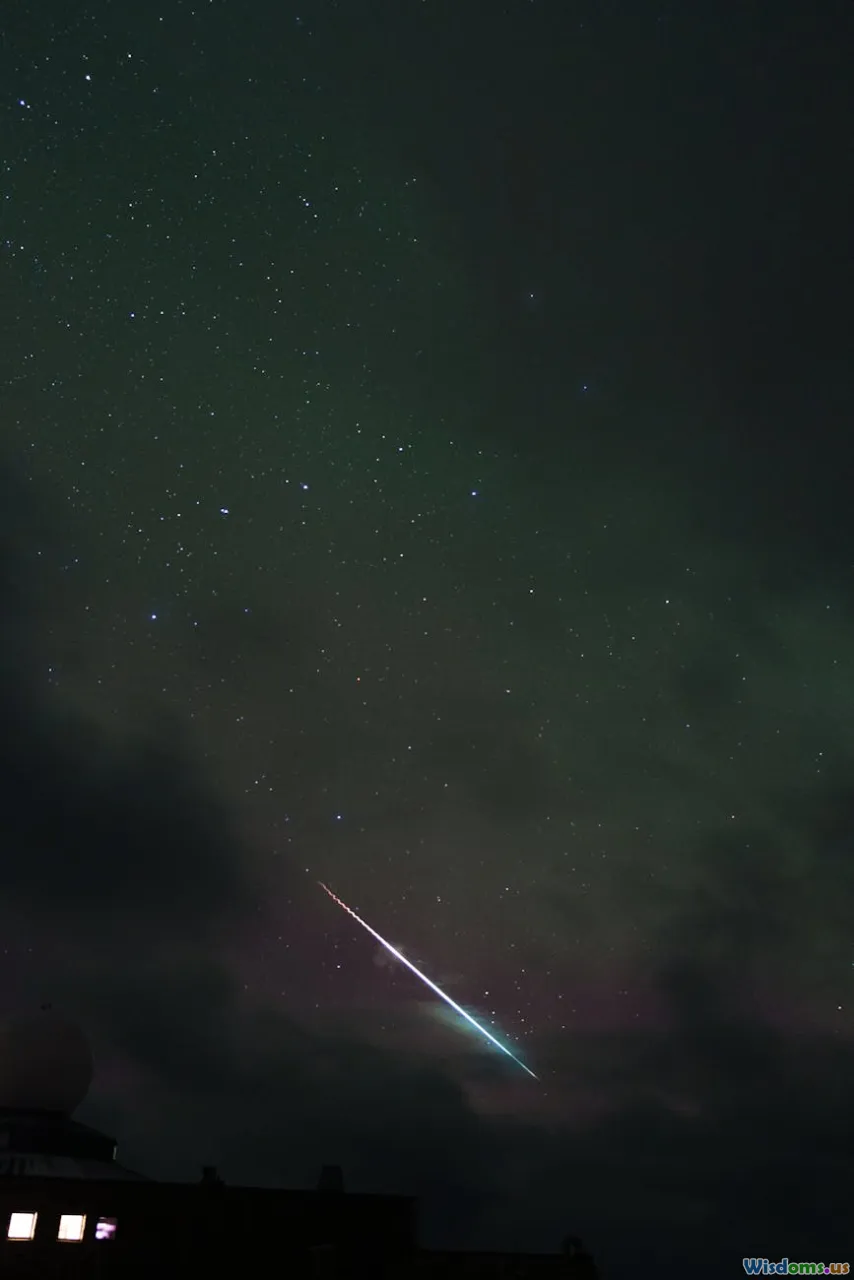
A StepbyStep Guide to Observing Meteor Showers from Your Backyard
8 min read Discover how to observe mesmerizing meteor showers from your backyard with this comprehensive step-by-step guide. (0 Reviews)
A Step-by-Step Guide to Observing Meteor Showers from Your Backyard
Meteor showers are one of the most spectacular natural light shows you can witness, and the best part is, you don’t need a fancy telescope or expensive equipment to enjoy them. Whether you live in a bustling city or a quiet suburb, this guide will empower you to watch these fleeting streaks of light from the comfort of your own backyard.
Why Meteor Showers Matter
Every year, our planet passes through streams of cosmic debris left behind by comets or asteroids. When these tiny particles enter Earth’s atmosphere at high speeds, they burn up, creating brilliant flashes known as meteors or "shooting stars." Watching meteor showers connects us directly to the dynamic processes of our solar system.
Legendary showers such as the Perseids, Geminids, and Leonids have fascinated humanity for centuries. For example, the Perseids peak every August, offering up to 60 meteors per hour under perfect conditions. Their consistent reliability makes them a favorite for backyard astronomers.
Preparing for Your Meteor Shower Observation
1. Know When and Where to Watch
Meteor showers peak at specific times of the year. Popular annual showers include:
- Quadrantids (early January)
- Lyrids (mid to late April)
- Perseids (mid-August)
- Orionids (late October)
- Geminids (mid-December)
Using apps like Stellarium or websites such as the American Meteor Society, you can pinpoint the peak dates and best viewing hours (usually after midnight to pre-dawn).
2. Choose a Dark Spot in Your Backyard
Light pollution severely limits meteors’ visibility. Even in urban settings, removing or dimming nearby lights and running your observation from a shaded corner can enhance your experience. For rural backyard observers, you’re already advantaged, but it’s still wise to avoid streetlights and porch lamps.
3. Check the Weather Forecast
Clear skies are essential. Clouds, fog, or rain will obscure your view. Monitor local weather forecasts a few days ahead and plan accordingly.
Setting Up for Success
1. Dress Comfortably and Warmly
Nighttime temperatures can drop quickly. Wearing layered clothing, gloves, and even a warm hat ensures you stay comfortable for extended star-gazing.
2. Gather Your Equipment
While meteor watching requires minimal gear, some items will improve the experience:
- Comfortable Recliner or Blanket: Because you’ll be looking upward for long periods, lying down prevents neck strain.
- Red Flashlight: Red light preserves your night vision better than white light, helping your eyes adjust to darkness.
- Star Charts or Mobile Apps: Knowing which constellations to look towards enhances your ability to identify meteor radiants.
Unlike planets or galaxies, meteors are quick and naked-eye visible, so no telescope is necessary.
3. Bring Refreshments and Patience
A thermos of tea or hot chocolate and some snacks can make the wait enjoyable. Meteor showers can be sporadic.
Observing Techniques
1. Give Your Eyes Time to Adjust
Allow at least 20 minutes for your eyes to adapt fully to the dark. Avoid looking at bright screens or lights.
2. Look at the Right Part of the Sky
Identify the radiant point—the area of the sky where meteors appear to originate. For example, during the Perseids, the radiant lies within the constellation Perseus, visible in the northeastern sky. However, meteors can appear anywhere, so a broad view of the sky is best.
3. Keep Scanning
Don't fixate on one spot. Slow, sweeping eye movements across the sky increase chances of spotting meteors.
4. Expect Variation
Shower rates fluctuate. Gemini and Perseid peaks can deliver dozens per hour in ideal conditions. Other times you might see only a few.
Real-World Insights and Examples
Renowned astronomer Dr. Emily Lakdawalla once remarked, “Meteor showers are one of the few astronomical events where beginners can observe celestial wonders without expensive lenses or complex setups. It’s a humbling reminder of Earth’s journey through the cosmos.”
NASA provides real-time updates during shower peaks. For instance, the 2023 Geminids reached up to 120 meteors per hour under pristine skies in remote areas.
Astronomy clubs across the globe often hold public meteor shower viewing events. Whether joining a group or observing solo, documenting the number and brightness of meteors can enhance your engagement.
Troubleshooting Common Challenges
- Light Pollution: Use blackout curtains at windows or reposition yourself to a darker nearby location.
- Cold Weather: Shorten observation sessions into multiple warm-up breaks.
- Clouds: If weather is unstable, flexibility in timing can still reward you when the sky clears briefly.
Beyond the Basics: Enhance Your Experience
Photographing Meteors
If you own a DSLR camera with manual settings, try long exposures (10-30 seconds) on a tripod pointed at your chosen part of the sky. This can capture multiple meteors and star trails.
Tracking Meteor Showers Year-Round
Keep a meteor log or journal to note dates, estimated counts, and conditions—enhancing both knowledge and anticipation each season.
Conclusion
Observing meteor showers from your backyard is accessible, awe-inspiring, and connects you to the vast universe. By preparing well—understanding timings, minimizing light pollution, dressing for comfort, and using keen observing strategies—you'll maximize not just the quantity but the quality of your meteor shower experience. Next time the sky puts on its celestial fireworks, you’ll be ready to watch and wonder at the cosmic dance unfolding right above.
Step outside, look up, and catch a glimpse of the shooting stars that have fascinated humanity for millennia.
Rate the Post
User Reviews
Popular Posts

















